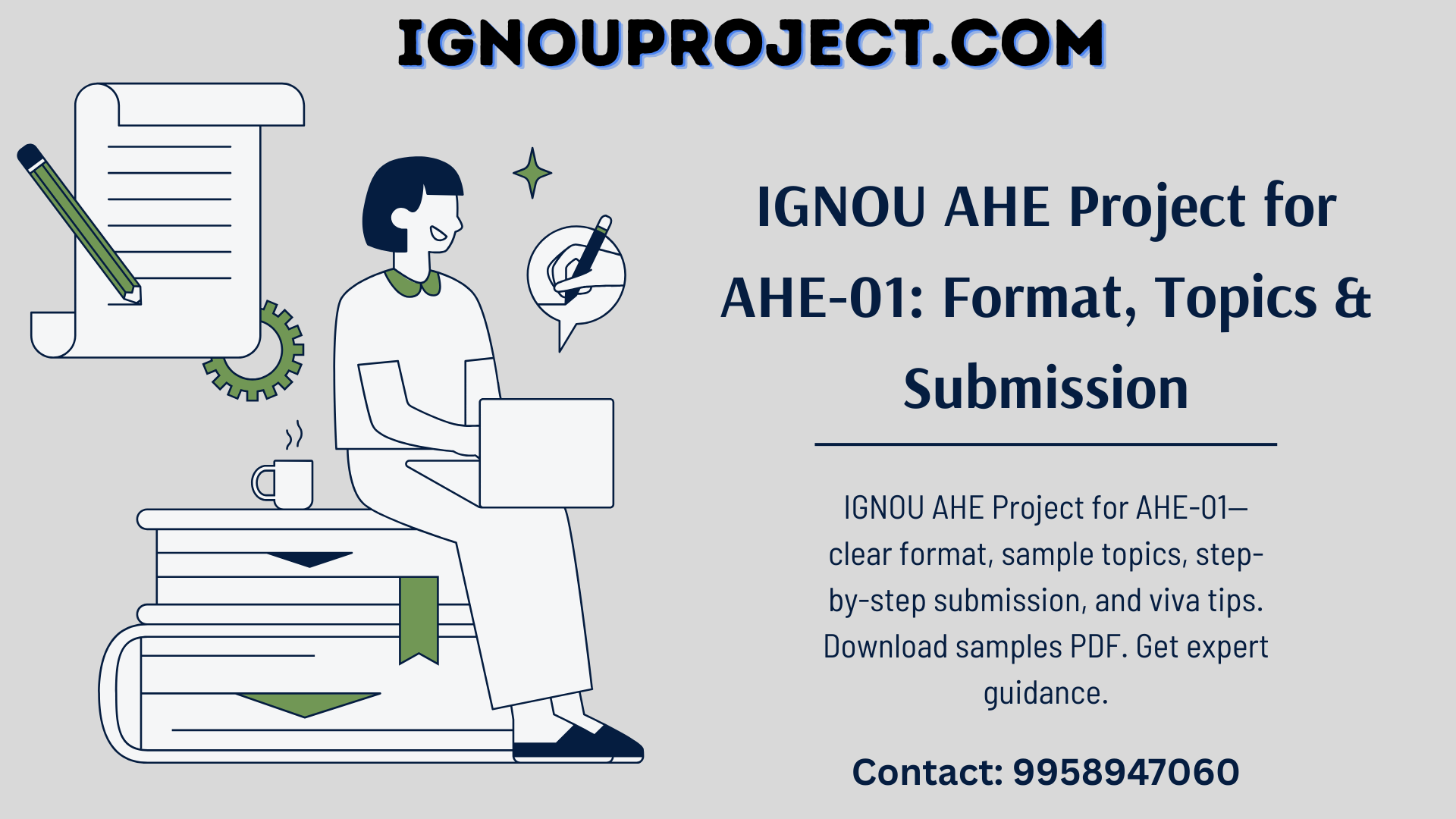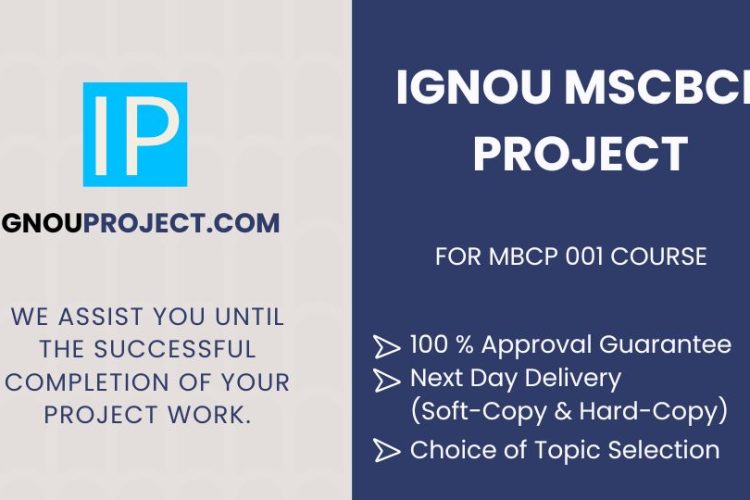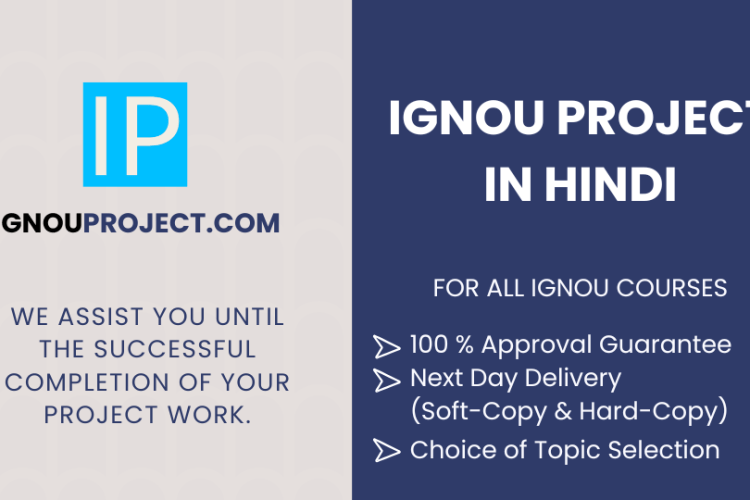
The IGNOU AHE Project for AHE 01 evaluates the ability to apply Human Environment concepts to real problems such as waste, water, air, biodiversity, and sustainability. Learners plan a study, collect primary or secondary data, analyze findings, and present evidence-driven conclusions. This guide provides the exact AHE-01 project format, topic ideas, research methods, submission workflow, formatting rules, and viva voce preparation.
What Is AHE-01 (Human Environment) & Why the Project Matters
Course outcomes & evaluation weightage
AHE-01 develops understanding of environmental systems, human impacts, and sustainable responses. The project component evidences applied learning and can materially affect the overall grade. Many centres describe AHE-01 as an 8-credit course with a compulsory project component. Meeting format and academic integrity standards is essential for successful evaluation.
Skills you’ll demonstrate (research, analysis, presentation)
- Research: framing a problem, designing a study, and selecting tools.
- Analysis: descriptive statistics, charts, or thematic coding.
- Presentation: coherent structure, tables/figures with captions, APA/MLA referencing.
- Ethics: consent, confidentiality, and anti-plagiarism practices.
- Project management: scheduling, approvals, submission compliance.
IGNOU AHE Project Format — Exact Structure
Title page & declaration
Include: project title; learner name; enrolment number; programme; study centre/RC; session; year. Add Student Declaration (original work) and, if required, Guide/Supervisor Certificate. Optional: acknowledgement.
Abstract (150–250 words)
Summarise the problem, objectives, methods (e.g., survey n, sites, tests), key results, and 1–2 recommendations. Write it last; place it after front matter.
Table of contents & list of tables/figures
Provide a paginated Contents. Add separate List of Tables and List of Figures with numbers, titles, and page references.
Chapter 1 — Introduction (problem statement, objectives, scope)
Present context and significance; state a focused problem statement and 2–5 measurable objectives. Define scope (population/area/variables) and note key limitations that frame feasibility.
Chapter 2 — Literature Review (key themes, gaps)
Organise by themes (e.g., pollution drivers, health impacts, mitigation). Synthesize major findings, contrast viewpoints, and identify gaps the project addresses.
Chapter 3 — Methodology (design, tools, sampling, ethics)
Explain design (survey/case study/experiment/mixed), sample & sampling, instruments (questionnaire, kits, interview guide), procedures, and ethics (consent, confidentiality). Pre-specify planned analyses.
Chapter 4 — Data Analysis & Findings (tables/figures)
Report results aligned to objectives. Use numbered tables/figures. Provide frequencies/percentages, means/ranges, simple comparisons or themes. Keep interpretation minimal here.
Chapter 5 — Discussion (link to objectives & literature)
Interpret findings, answer objectives, compare with literature, note implications for policy/practice, acknowledge limitations, and suggest future work.
Chapter 6 — Conclusion & Recommendations
State concise conclusions grounded in evidence. Provide actionable recommendations (community, institution, policy) directly tied to results.
References (APA/MLA) & Annexures (questionnaire, raw tables)
Use APA or MLA consistently. Add annexures: blank questionnaire/interview schedule, consent form template, raw data tables, photos (labelled).

Figure: “AHE-01 Project Format at a Glance” (title → chapters → annexures).
How to Choose an IGNOU AHE Project Topic (Human Environment Focus)
Topic selection criteria (relevance, feasibility, measurability)
- Relevance: direct Human Environment linkage, local significance, potential for sustainable solutions.
- Feasibility: tools, access, time, permissions, safety.
- Measurability: clear variables/indicators; primary data preferable; defined unit of analysis; achievable sample.
20 Sample IGNOU AHE-01 Project Topic Ideas
- Household waste segregation and recycling behaviour in [Locality].
- Drinking water quality assessment of wells/handpumps in [Area].
- Spatial variation of AQI/PM2.5 across traffic corridors in [City].
- Bird or plant diversity audit in an urban park.
- Eco-literacy among secondary school students.
- Single-use plastic usage patterns and reduction intent.
- Household adoption of solar water heaters/rooftop PV.
- Green campus audit: energy, waste, water, biodiversity.
- Community awareness and practices for e-waste disposal.
- Residential electricity consumption patterns and conservation levers.
- Impact of urbanisation on a local lake/pond (encroachment, quality).
- Participation and survival rates in community tree plantation.
- Effectiveness of local plastic bag ban—retailer compliance and consumer shifts.
- Public transport usage vs private vehicles and perceived air quality.
- Climate change awareness and perceived local impacts.
- Sustainable agriculture practices among peri-urban farmers.
- Noise pollution mapping by zone and time of day.
- Rainwater harvesting adoption and estimated savings.
- Soil quality for urban kitchen gardening (nutrients/heavy metals).
- Evaluation of a school/NGO environmental education programme.

Figure: “20 Project Topic Ideas for Human Environment (AHE-01).”
Research Methods for IGNOU AHE-01 Project
Primary vs secondary data (pros/cons)
- Primary: original, current, tailored (surveys, tests, observations); requires time and access.
- Secondary: broad/historical (CPCB, census, reports); may misalign with objectives.
Combining both strengthens validity when sources converge.
Designing questionnaires/interview guides
Define information needs → draft concise, neutral questions → mix closed (MCQ, Likert) and a few open items → logical order → pilot test → refine. Interview guides should list themes with prompts; allow probing.
Sampling basics & sample size tips
Define population; prefer random/stratified sampling; justify convenience/purposive if used. Typical student surveys: ~50–100 respondents; experiments/observations: multiple sites/repeats; qualitative interviews: 5–15 until thematic saturation.
Data analysis (descriptive stats, simple charts)
Use frequencies/percentages, means/medians, ranges. Present bar/pie/line charts with labelled axes/units. For qualitative data, code themes and illustrate with brief anonymised quotes.
Ethics, consent, and plagiarism norms
Obtain informed consent, ensure anonymity, and avoid harm. Maintain data security. Write in original language; cite sources; avoid copying text/figures. Include a signed originality declaration.
Step-by-Step Workflow in AHE 01 Project — From Synopsis to Submission
Writing the AHE 01 synopsis (objectives, methods, timeline)
Include title, background, objectives (2–5), methodology (design, tools, sample), timelines, and expected outputs. Keep it focused (≈3–5 pages). Align objectives with measurable data.
For a visual guide and templates, refer to our article “How to write IGNOU Synopsis/Proposal?”
Getting approval (supervisor/centre)
Work under an eligible supervisor. Submit the AHE 1 synopsis with proforma/consent as per your study centre/RC process. Await approval before full-scale data collection. Retain the approval copy for binding.
Conducting fieldwork / desk study
Finalise tools; schedule visits; follow sampling plan; maintain a field log; collect photos (with permission). For desk research, archive datasets with source/date notes and maintain version control.
Drafting, formatting, citations
Write chapter-wise; embed numbered tables/figures and cross-references; apply APA/MLA consistently; ensure objective, active-voice prose. Revise for coherence and eliminate redundancy.
Final print & binding / soft copy norms (as applicable)
Export a final PDF; print on A4; spiral/thermal bind as per centre norm; label the cover. If soft copy is requested, ensure fonts embedded and file-naming per instructions.
Submission checklist & recordkeeping
Verify front matter, chapters, references, annexures, approval page, signatures. Keep one bound copy and a digital backup. Obtain a stamped receipt/acknowledgement on submission.

Figure: Step-by-Step Workflow from Synopsis to Submission in AHE 01 Project
Formatting Rules & Presentation for AHE Project
Page setup (A4, margins, font, spacing)
A4 portrait; margins ~1.5″ left, 1″ others [verify local norm]; Times New Roman 12 pt; 1.5–2.0 line spacing; justified text; consistent heading hierarchy.
Numbering, tables/figures, captions
Number chapters and sections (e.g., 3.1, 3.2). Use Table 4.1, Figure 4.1 style per chapter. Put table titles above; figure captions below; include units; reference each in text; add lists of tables/figures.
Referencing styles (APA/MLA quick examples)
Use one style throughout.
- APA: in-text (Author, Year); hanging-indent references.
- MLA: in-text (Author Page); Works Cited with italics/quotes as appropriate.

Figure: Formatting Rules & Presentation for AHE Project
Viva Preparation (AHE-01)
Likely questions & model pointers
- Why this topic? → relevance and feasibility.
- Objectives? → list and link to methods.
- Methodology? → design, sample, tools, ethics.
- Key findings? → 2–3 headline results with evidence.
- Relation to literature/course? → align or contrast.
- Limitations and future work? → practical, honest.
How to defend methods & findings concisely
State rationale (sampling, tools), cite data patterns, and acknowledge scope. Use structured answers: result → interpretation → implication. Avoid over-claims; emphasise triangulation.
Bringing proof (tools, raw data, consent forms)
Carry filled questionnaires/interview notes, lab outputs, consent template, photo evidence, and a marked copy of the AHE report. Present on request; protect confidentiality.
Submission Calendar for IGNOU AHE Project — Jan vs July Cycle (At-a-Glance)
Typical windows (synopsis vs final report)
Commonly observed windows (confirm with your RC):
- January cycle: synopsis by 31 March; final report by 30 September.
- July cycle: synopsis by 30 September; final report by 31 March (next year).
Buffer strategy & reminders
Back-plan from the deadline. Finish data collection ≥4 weeks prior; complete a full draft ≥2 weeks prior; print/bind ≥5 days prior. Set calendar alerts; follow up on approvals early.
Downloads Resources
For successfully completing the IGNOU AHE-01 project, it helps to have the right resources at your fingertips. Here are some useful downloadable resources and references related to the AHE-01 project:
- IGNOU AHE Project Synopsis Sample PDF
- AHE 01 Project Report Sample PDF
- IGNOU AHE-01 Project Topics Sample List
FAQs on IGNOU AHE Project (AHE-01)
What is the weightage of the IGNOU AHE 1 project in the AHE course evaluation?
It’s roughly 25% of the course (2 credits out of 8). You must score at least 40/100 in the project to pass, and it contributes to your final grade for AHE-01.
Do I need to submit a synopsis for the IGNOU AHE 1 project?
Yes. You must write a project synopsis (proposal) and get it approved by your study centre/supervisor before conducting the full project. Without an approved synopsis, the final project report will not be accepted.
How long should the IGNOU AHE 01 project report be?
Typically, around 40–60 double-spaced pages (excluding annexures), as per IGNOU guidelines, focusing on quality of content over length.
What is the last date for submitting the IGNOU AHE 01 project?
For the January cycle, usually by September 30; for the July cycle, usually by March 31 of the next year. Always check the latest IGNOU announcements for exact dates.
Is there a viva voce for the IGNOU AHE 01 project?
Generally, yes. Many IGNOU centers conduct a viva voce (oral defense) for the project to assess your understanding. Be prepared to answer questions about your work at the study centre.
How do I choose a good topic for the IGNOU AHE-01 project?
Pick a human-environment topic that interests you, is relevant to the course, and is feasible within your time and resource limits. It should allow you to collect data and address clear objectives (we’ve listed 20 ideas to inspire you).
Where do I submit the AHE-01 project report?
Usually, you should submit your project report to your IGNOU Regional Centre via your Study Centre. Follow the instructions given by IGNOU – typically, you hand it in at the study centre, who forwards it for evaluation.
What are the passing marks for the AHE-01 project?
You need at least 40 out of 100 marks to pass the project. Scoring below 40 means you’ll have to re-submit the project in a later session to complete the course.
Conclusion
In summary, the IGNOU AHE project for AHE 01 subject course is a rewarding opportunity to apply what you’ve learned about the Human Environment to a real-world issue. Let’s recap the key takeaways and outline your next steps to ensure success:
- Plan and Structure Your Work: The project carries significant weight (2 credits out of 8) and follows a strict format with defined chapters and sections. Early planning is crucial. Clearly define your topic, objectives, and method before diving in. Use the provided structure (Introduction, Literature Review, Methodology, etc.) as a roadmap from day one. This will keep your research focused and your writing organized.
- Choose a Feasible, Relevant Topic: Select a project topic that is meaningful yet manageable. Ensure it ties into human-environment interactions and can be completed with the resources and time you have. We provided 20 sample ideas ranging from water quality tests to awareness surveys – use them as inspiration. A well-chosen topic aligned with your interest will keep you motivated and produce a more insightful study.
- Use Sound Research Methods and Ethics: Whether you’re conducting surveys, experiments, or case studies, design your methodology carefully. Mix primary data (for originality) and secondary data (for context) as needed. Pay attention to sampling, as it underpins the validity of your findings. Equally important, uphold ethics: get consent from participants, ensure data privacy, and avoid any form of plagiarism in your report. Originality and integrity are critical – IGNOU has a zero-tolerance policy for copied work.
- Follow IGNOU Project Guidelines and Deadlines: Adhere to the IGNOU project format – include all required sections (title page, abstract, chapters 1–6, references, annexures). Use the recommended formatting (A4, double-space, APA/MLA referencing) to give your report a professional presentation. Be mindful of the timelines: submit your synopsis and final report by the deadlines for your batch (Jan or July). Use the buffer strategies we discussed to avoid last-minute rush and to accommodate any unforeseen delays.
- Leverage Available Resources: Don’t work in isolation. Utilize the official project guide, your AHE-01 study material, and advice from your supervisor. Download sample proposals or reports for reference. Use tools for data analysis (even basic Excel charts can elevate your findings presentation) and checklists to track your progress. The resources and tips provided in this guide are there to support you – make the most of them.
- Prepare for the Viva Voce: After submission, get ready to defend your project in the viva. Review your report thoroughly – you should be intimately familiar with every part of it. Anticipate questions about your motivations, methods, results, and how they connect to environmental concepts. Practice explaining your project concisely and confidently. Remember to gather any supporting materials (raw data, forms, etc.) to bring to the viva as evidence of your work. A calm, informed defense can significantly boost your overall score.
Need Help with Your IGNOU AHE Project (AHE-01)?
Get expert assistance, topic suggestions, and ready-to-submit project reports now!
👉 [Contact Us] | 🌐 Visit: ignouproject.com

